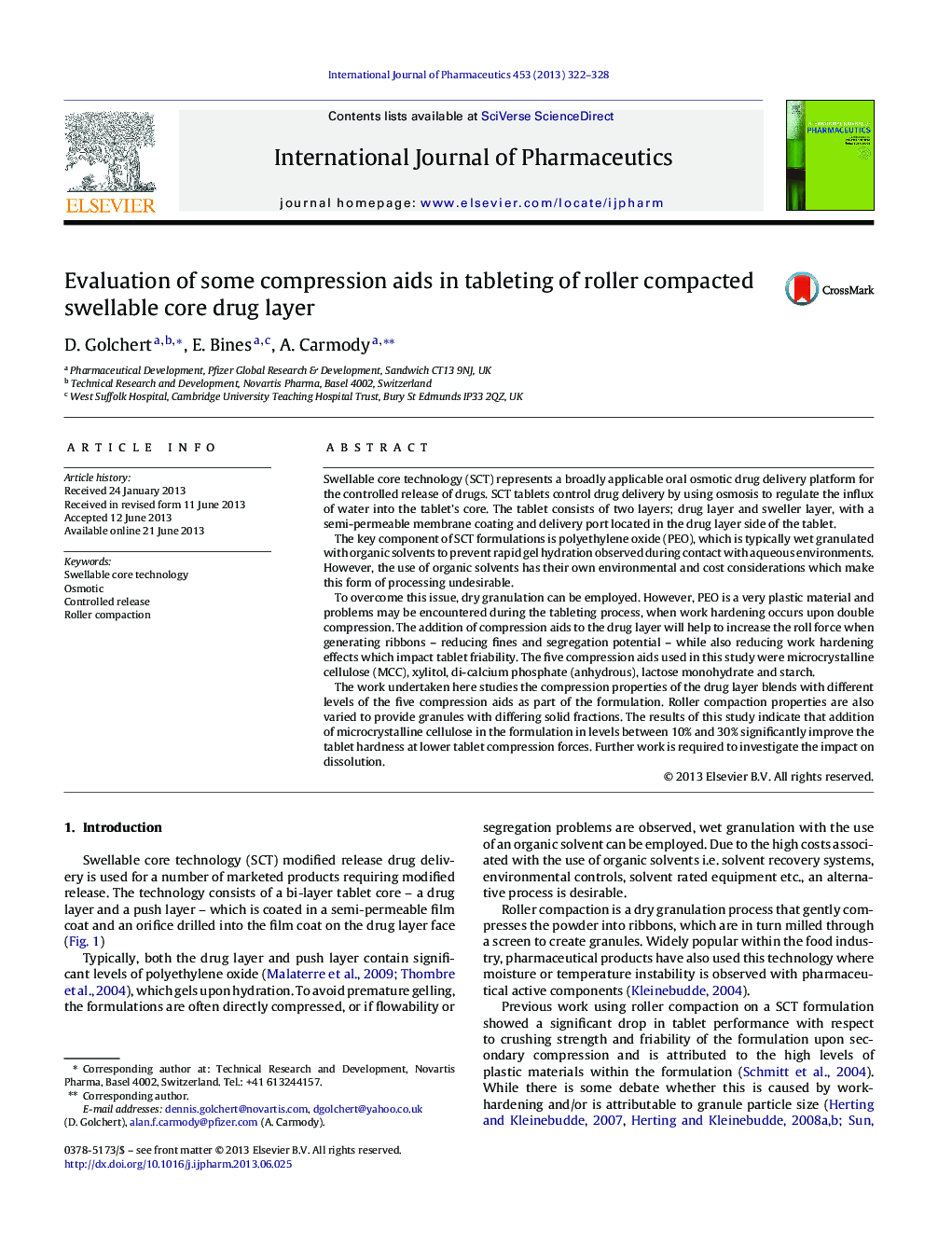| کد مقاله | کد نشریه | سال انتشار | مقاله انگلیسی | نسخه تمام متن |
|---|---|---|---|---|
| 2502178 | 1557379 | 2013 | 7 صفحه PDF | دانلود رایگان |

Swellable core technology (SCT) represents a broadly applicable oral osmotic drug delivery platform for the controlled release of drugs. SCT tablets control drug delivery by using osmosis to regulate the influx of water into the tablet's core. The tablet consists of two layers; drug layer and sweller layer, with a semi-permeable membrane coating and delivery port located in the drug layer side of the tablet.The key component of SCT formulations is polyethylene oxide (PEO), which is typically wet granulated with organic solvents to prevent rapid gel hydration observed during contact with aqueous environments. However, the use of organic solvents has their own environmental and cost considerations which make this form of processing undesirable.To overcome this issue, dry granulation can be employed. However, PEO is a very plastic material and problems may be encountered during the tableting process, when work hardening occurs upon double compression. The addition of compression aids to the drug layer will help to increase the roll force when generating ribbons – reducing fines and segregation potential – while also reducing work hardening effects which impact tablet friability. The five compression aids used in this study were microcrystalline cellulose (MCC), xylitol, di-calcium phosphate (anhydrous), lactose monohydrate and starch.The work undertaken here studies the compression properties of the drug layer blends with different levels of the five compression aids as part of the formulation. Roller compaction properties are also varied to provide granules with differing solid fractions. The results of this study indicate that addition of microcrystalline cellulose in the formulation in levels between 10% and 30% significantly improve the tablet hardness at lower tablet compression forces. Further work is required to investigate the impact on dissolution.
Work hardening of the drug layer (DL) blend can be avoided by low roll force compression during roller compaction; however, this can result in flow issues of the DL blend and carry over into the sweller layer during compression. The addition of a compression aid can help improve granule properties without degrading tablet performance.Figure optionsDownload high-quality image (326 K)Download as PowerPoint slide
Journal: International Journal of Pharmaceutics - Volume 453, Issue 2, 10 September 2013, Pages 322–328